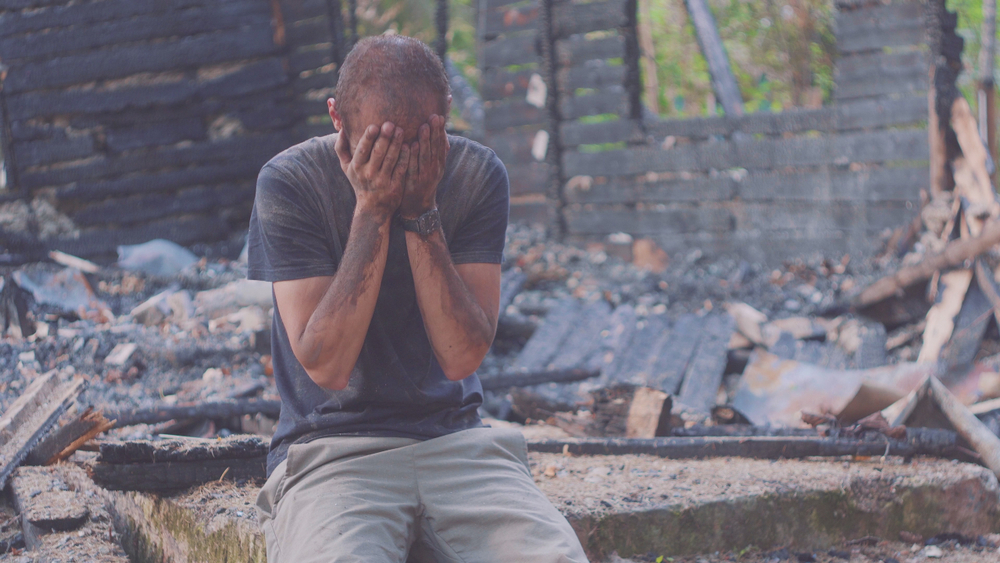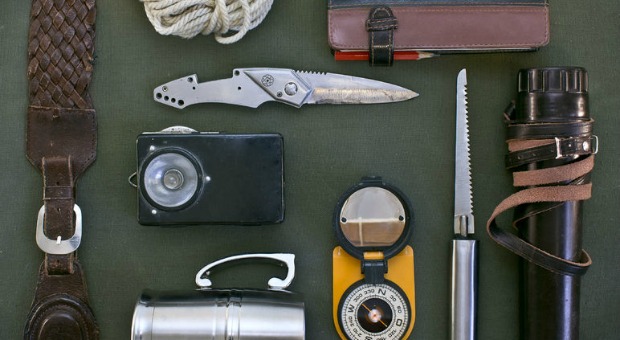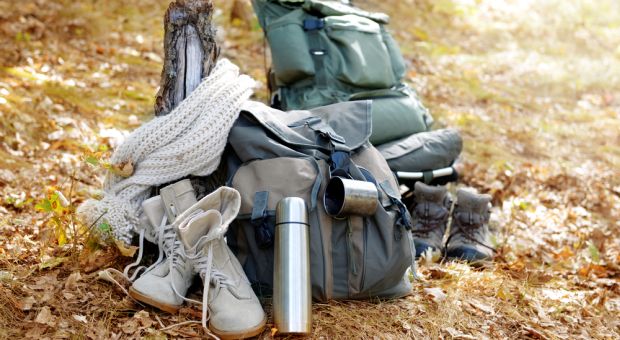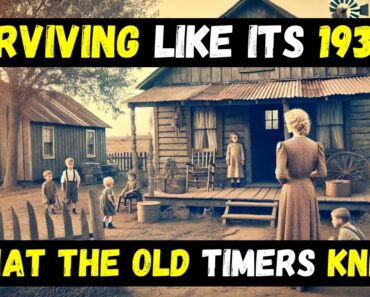The old saying goes, “the only constant is change.” That’s as true in the world of survival as it is anywhere else in life.
Many of the ideas we have today, much of the gear didn’t exist 45 years ago when I took my first class in wilderness survival. Nor are our concerns the same. Back then, it was about surviving if you got lost in the woods. The only major disaster anyone talked about was the thermonuclear war. It wasn’t a very comprehensive viewpoint compared to the one we have today.
Our understanding of disasters and the risks we face have expanded since then. We now have a whole plethora of disaster scenarios we study, seeking out how to survive them. But we also have many more tools to work with, much more gear we can choose from, and even packaged survival food we can buy.
3 Second SEAL Test Will Tell You If You’ll Survive A SHTF Situation
This should make us much more prepared to survive. But that’s not automatic. Being able to buy a bunch of gear doesn’t guarantee anyone’s survival. It’s a matter of having the right gear and the knowledge in how to use it.
Part of the challenge for us all is that we’re preparing for the unknown. We can study the potential hazards and try to determine which ones are the most likely to occur. In the end, there’s no way we can know exactly what will happen. There is no crystal ball, or we would have already invested in the technology needed for the COVID-19 pandemic.
We face a huge difference in dealing with various disasters. Somehow, we’ve got to be ready for them all. Most of the time, we do that by preparing for the worst; but that can’t be very easy, especially in our everyday lives. That’s why it’s important to adopt a layered approach to our survival preparedness and strategy.
Layer 1 – Start with a Foundation of Knowledge
One of the great television shows of all time was the old MacGyver series. In every episode, MacGyver found himself in an impossible situation, often one in which his life was in danger. Yet he always managed to find a way out, applying science to find a way to thwart his enemies and save his own life.
While I’m not MacGyver and I don’t expect you to be, that show illustrated a key element of survival – the ability to make use of whatever you have at hand. If you’ve watched any of the survival reality TV shows, you’ve seen the same. Granted, both are creatures of Hollywood, but the reality is that the ability to improvise, using whatever is at hand to do whatever needs to it’s a must.
As preppers, we need to realize that it is our knowledge, not the latest gear, which will make the difference between survival or not. Yes, gear can help, but we don’t even know if we’ll have our gear with us in a post-disaster world. Chances are, we’re going to have to do a lot of scrounging, both for food and for the tools we need to have, to survive.
Learning survival skills is good, but we shouldn’t limit ourselves to that alone. I used to be an engineer and I apply the things I learned to survive all the time. I was also a building contractor and woodworker as a hobby. There again, that helped me with survival. Between my engineering knowledge and my abilities, I have built many things that will help me and my family survive. In the wake of a TEOTWAWKI event, the most valuable people will be those who know how to do things to help society survive and rebuild.
Layer 2 – What’s on Your Body?
Our first survival kit is always what we carry on our bodies, the key part of our EDC (everyday carry). I’ve seen many preppers show off their EDC carry on online groups and it’s all the same. While it contains helpful day-to-day things, few people actually carry what they need if trapped in a survival situation at work.
While it would be nice to carry a full survival kit at work, that’s not practical. People will notice, they might even develop all kinds of theories about why and what we were carrying. That’s not exactly good for our OPSEC, let alone our jobs.
If you have a private office at work or at least a personal desk or locker, you could keep a survival kit there. But even if you do so, what you carry on your body is still of prime importance.
The load may change, depending on where you work. Some employers don’t allow the carrying of firearms in the workplace. Some don’t even like knives. But even in those cases, you can usually get away carrying a multitool, which at least gives you a knife. You can also carry a few other things, like something to start fires with and a flashlight.
More than anything, your EDC should reflect what you might need to get from wherever you are to wherever your EDC bag will be, either your office or your car. Looking at it that way, the ability to find your way out of a burning or collapsed building is the biggest need you have. On top of that, you need the ability to call for help if trapped. That means something like carrying a whistle on your key ring.
Layer 3 – Your EDC Kit
Besides what’s on your body, your real EDC is what you carry in your EDC bag or kit. While most people think of that as a survival kit, I like to expand that definition to include using it as a get to a safe location bag. The updated kit should provide everything you need to make it home or a survival retreat, even if everything falls apart and you have to walk.
I work from home now, but I used to work a 45-minute drive across town. That meant that if I had to walk home, it would have taken me more than a day. So, my EDC had to include appropriate shoes to change into for the walk and a jacket, hat, and gloves. I’d also need enough survival gear to stop somewhere for the night and build myself a camp. Since I’ll have to cross a river, I also needed to be ready for that. So, I carried an inflatable inner tube to use as raft.
Your EDC kit might not need the same things as mine. It all depends on your individual situation. For example, you might need to include a firearm to protect yourself if you can’t carry one at work. You might not need good walking shoes, because you wear good shoes for walking as a matter of course.
The big danger in an EDC bag is going overboard and turning it into another bug out bag. It’s easy to justify needing all sorts of tools and survival gear. But in reality, it’s more important to pack a rain poncho in there than to make sure you have a tomahawk or wire saw.
Layer 4 – Your Home
Hopefully, you’ll be able to make it home from your work or wherever you are, without any serious delays. At the same time, the rest of your family should do the same, with those who get there first holding the fort down and putting your survival plan into effect.
Obviously, your home offers much more to help you survive than anything you can carry on your person. That’s why most survival instructors and writers will tell you that it makes more sense to bug in than to bug out. Bugging out should only be considered when your chances of survival away from home are greater than they are at home.
But your home needs to be prepared as well. Besides stockpiling supplies, you need some sure and secure means of a consistent water supply, one you don’t need to leave your home for. This is part of the efforts you need to develop self-sufficiency there in your home. Your home also needs to be fortified so that you can defend yourself, should the need arise.
Layer 5 – Your Bug Out
Finally, if your home becomes untenable, you’re going to have to bug out. Your bug out bag and your survival retreat are your fifth layer.
Too many preppers have bug-out bags which are more like INCH bags. I know, as I’m one of them. While I don’t plan on ever heading off into the woods, without any plans of returning home, I carry a lot of survival gear because I’ll probably have to make it to my survival retreat on foot. Since it is farther away than I would like, I’ll have to survive in the woods a couple of weeks before I get there.
But my bug-out bag serves another purpose too. When I’m on the road, it’s my constant companion. I’ve structured my bag to serve as an emergency kit for anything that I might encounter while traveling. The difference really isn’t all that great, but it does push me towards being a bit more equipment heavy than just enough to get to my survival retreat.
Layering Your Bug Out Kit
The same idea of layering should exist with your bug out bag or kit as well. I’ve broken mine down into four distinct layers. Should I ever bug out, I’d take them all with me. But each has a distinct purpose.
Layer one is what I carry on my body, as mentioned above. In this case, I’ll make sure that I have the most critical survival gear on my body, including fire starters, my knife, a hatchet, a pistol with extra ammo, a canteen, and a water purifying straw.
The second layer is built into my shooting vest. It contains some more extensive survival gear, including a rain poncho, an IFAK, a survival fishing kit, etc. I always try to make sure that I have enough in this vest to survive if I get lost in the woods, for example. For that matter, I wear this vest when hiking, ensuring that I always have a good survival kit with me.
The next layer, number three, is the obvious one. It’s my bug out bag. I probably carry more or less what everyone else does, with a couple of notable exceptions. First, I carry a pretty complete first-aid kit so that I can help anyone in need. I also carry five days worth of food, not three, and a couple of clothing changes. Finally, I carry an ultralight backpacking tent and sleeping bag. I really don’t understand why most preppers leave those out of their bags. After all, if backpackers can do it, why can’t we?
Finally, the fourth layer is the extra gear that I could bring along in my vehicle if possible. This includes more food and water, as well as more clothing. But more than anything, it includes some larger tools and seeds to start a garden. While I can survive without these things, if I find myself living in the woods for a prolonged period, I’m going to want them, especially the tools and the seeds.






























